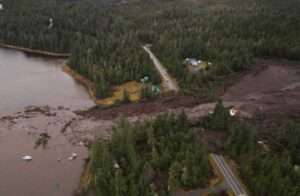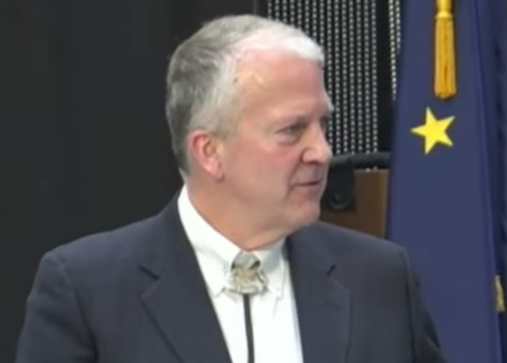
Washington, DC –U.S. Senators Lisa Murkowski (R-AK) and Alex Padilla (D-Calif.) introduced bipartisan legislation that will bolster emergency preparedness by improving atmospheric river forecasting to more precisely predict the timing and location of these storms. The Improving Atmospheric River Forecasts Act would require the National Oceanic and Atmospheric Administration (NOAA) to establish a forecast improvement program within the National Weather Service (NWS).
Atmospheric rivers, often described as “rivers in the sky” that are hundreds of miles wide and can carry water vapor equivalent to multiple Mississippi Rivers, cause more than 80 percent of flood damage across the West. Climate change will only make these storms increasingly catastrophic: by 2090, atmospheric rivers are expected to cost $2.3 to $3.2 billion in annual damages and increase in width by nearly 25 percent.
“It was one year ago that the community of Wrangell was devastated by the loss of six people, including three children, due to landslide. Ketchikan also experienced a deadly landslide just months ago. Haines and Sitka have also lost friends, family, and property due to massive landslides. With greater frequency, we are seeing that atmospheric rivers instill dangerous climate conditions that pose deadly threats to Alaska communities,” said Senator Murkowski. “While there are numerous atmospheric river observatories in the Lower 48, none are in Alaska. This bill ensures that all states along the West coast, including Alaska, have at least one atmospheric river observatory. Along with improved modeling, data collection, and risk communication, this legislation will help protect our communities and ultimately save lives across Alaska.”
“For the past several years, California communities have witnessed firsthand the ongoing threat of destructive flooding caused by intense and frequent atmospheric river storms,” said Senator Padilla. “California scientists have led the way in improving our understanding of these storms, and this bipartisan bill will strengthen forecasts to both reduce flood risks and bolster our water supply and drought resilience.”
“If enacted, this legislation will go a long way towards providing communities in Alaska with more accurate atmospheric river forecast and risk communication tools,” said Allison Bidlack, Management Team leader at the Alaska Climate Adaptation Science Center and Research Associate Professor at the International Arctic Research Center, University of Alaska Fairbanks.“This is especially crucial in coastal Alaska where the impacts of atmospheric rivers to life and infrastructure are all too real.”
Specifically, the Improving Atmospheric River Forecasts Act would direct NOAA to establish a standalone atmospheric river forecast improvement program that would:
- Develop accurate, effective, and actionable storm forecasts and warnings in collaboration with public and private partners across the weather enterprise;
- Evaluate innovative observation tools and emerging technologies to improve atmospheric river analysis, modeling, forecasts, and warnings;
- Authorize NOAA to procure equipment, aircraft, and personnel contracts to fully monitor atmospheric river events each winter;
- Improve atmospheric river hazard communication; and
- Includes Alaska in Office of Atmospheric Research’s (OAR) Hydrometeorological Testbed (HMT) program, which is currently responsible for the atmospheric observatories along the West Coast.
[content id=”79272″]








